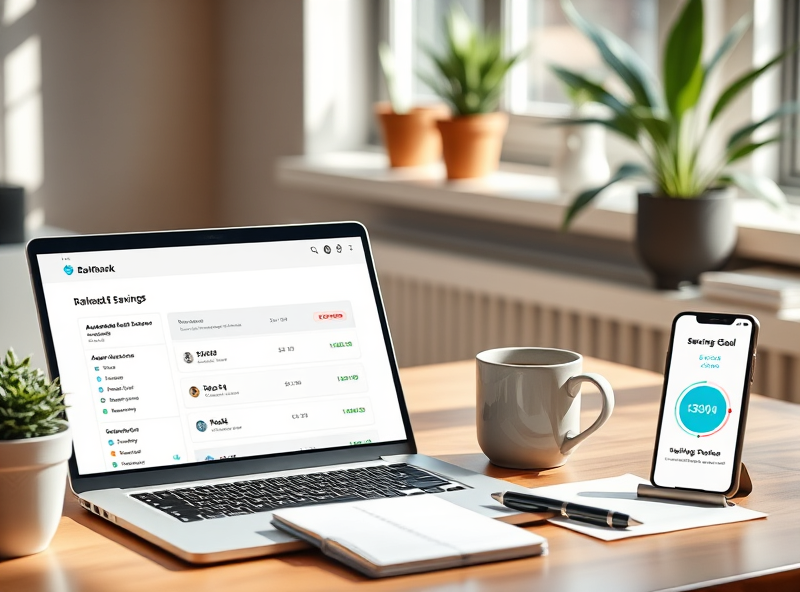
Automating Your Savings: How Smart Automation Boosts Financial Success

Saving money is a cornerstone of financial health, but for many Americans, consistently setting aside funds can be a challenge. According to a 2023 Bankrate survey, more than half of U.S. adults have less than three months’ worth of emergency savings. The good news? Automating your savings can dramatically improve your financial success by making saving effortless, consistent, and smart.
Why Automating Your Savings Works
Automation removes the friction and human error from saving. When you automate your savings, a predetermined amount of money is transferred from your checking account to your savings account or investment account on a regular schedule—usually right after payday. This process is known as “paying yourself first.”
This strategy is effective because it eliminates the temptation to spend what you might otherwise save. It also builds discipline without requiring daily effort. According to the Consumer Financial Protection Bureau (CFPB), automatic savings plans are one of the most effective tools for building financial resilience.
Popular Tools and Platforms for Automated Savings
There are several reliable tools and platforms in the U.S. that make automating your savings easy:
– Bank-based automation: Most banks and credit unions offer recurring transfer features. You can set up automatic transfers from your checking to your savings account on a weekly, biweekly, or monthly basis.
– Employer direct deposit: Many employers allow you to split your paycheck into multiple accounts. You can designate a portion of your paycheck to go directly into savings.
– Apps like Digit, Qapital, and Chime: These apps use algorithms to analyze your spending habits and automatically transfer small amounts of money into savings. For example, Digit uses AI to determine how much you can afford to save without impacting your daily spending.
– Robo-advisors: Platforms like Betterment and Wealthfront offer automated investing options. They not only save your money but also invest it according to your risk tolerance and goals.
Automated Savings for Different Financial Goals
Automation can be tailored to meet various financial goals:
– Emergency Fund: Set up a recurring transfer to a high-yield savings account until you reach 3–6 months of living expenses.
– Retirement: Use automatic contributions to your 401(k) or IRA. According to the IRS, in 2023, individuals can contribute up to $22,500 to a 401(k) and $6,500 to an IRA.
– Vacation or Holiday Funds: Create a separate savings account and automate small weekly deposits to avoid holiday debt.
– Big Purchases: Whether it’s a car, home, or wedding, automating savings for large expenses ensures you’re financially prepared when the time comes.
Tips for Making the Most of Automated Savings
– Start Small: Even $10 a week adds up over time. The key is consistency.
– Use High-Yield Savings Accounts: These accounts offer better interest rates than traditional savings accounts. According to the FDIC, the national average interest rate for savings accounts is around 0.42%, but high-yield accounts can offer 4% or more.
– Review Regularly: Life changes, and so should your savings strategy. Revisit your automated transfers every few months to ensure they align with your current goals.
– Combine with Budgeting Tools: Use apps like Mint or YNAB (You Need A Budget) to track your spending and identify additional savings opportunities.
Common Pitfalls to Avoid
While automation is powerful, there are a few things to watch out for:
– Overdrafts: Make sure your automated transfers don’t exceed your available balance. Some banks offer low-balance alerts to help prevent this.
– Forgetting Your Goals: Automation isn’t “set it and forget it.” Periodically check in to ensure your savings are on track.
– Ignoring Investment Opportunities: While saving is important, don’t forget to invest for long-term growth. A diversified portfolio can offer better returns than a savings account alone.
Final Thoughts
Automating your savings is one of the smartest financial moves you can make. It simplifies the process, builds discipline, and helps you reach your goals faster. Whether you’re saving for an emergency, a vacation, or retirement, automation ensures you’re always moving forward—without having to think about it every day.
Disclaimer
This blog post is for informational purposes only and does not constitute financial advice. Always consult with a certified financial advisor or tax professional before making financial decisions. The author and publisher are not responsible for any financial losses or decisions made based on the information provided herein.








답글 남기기